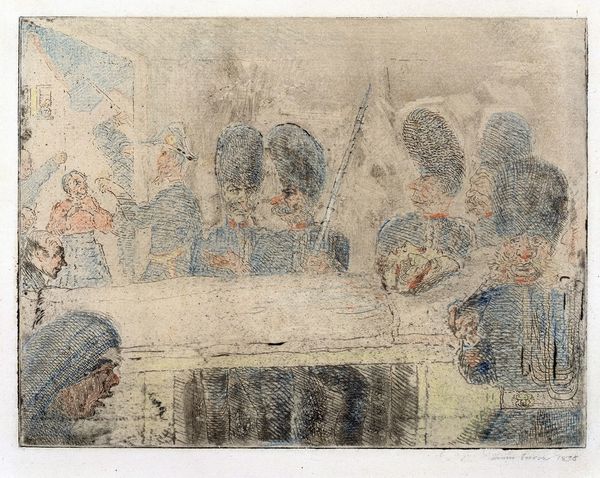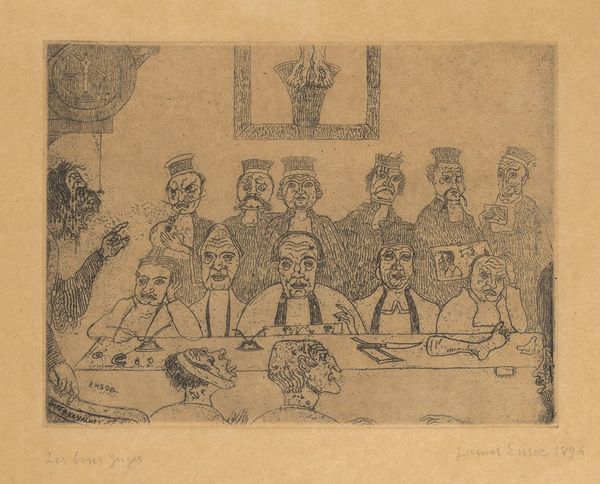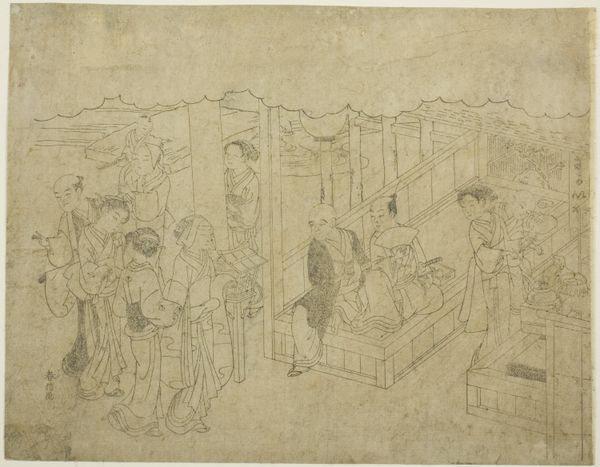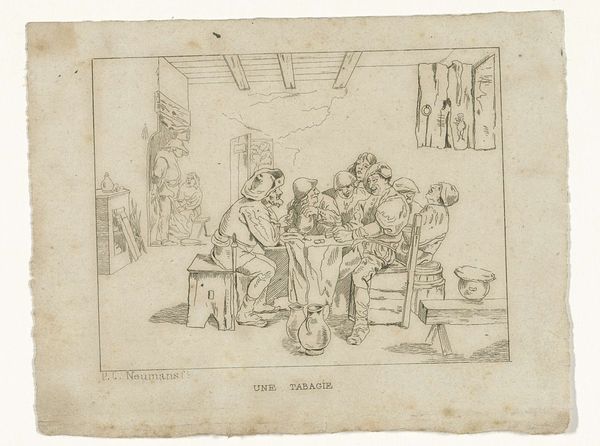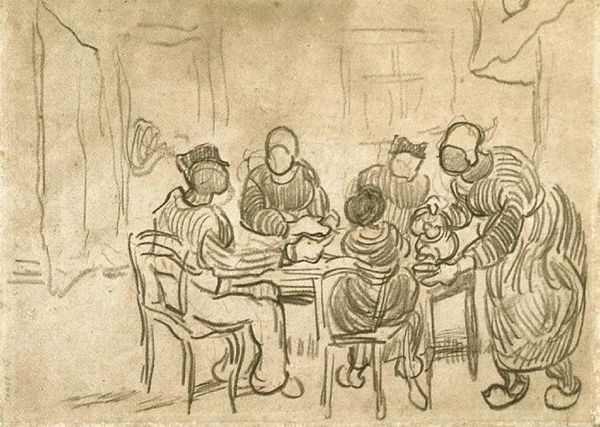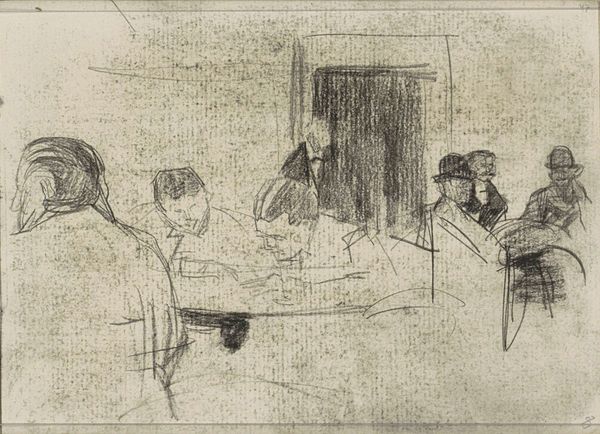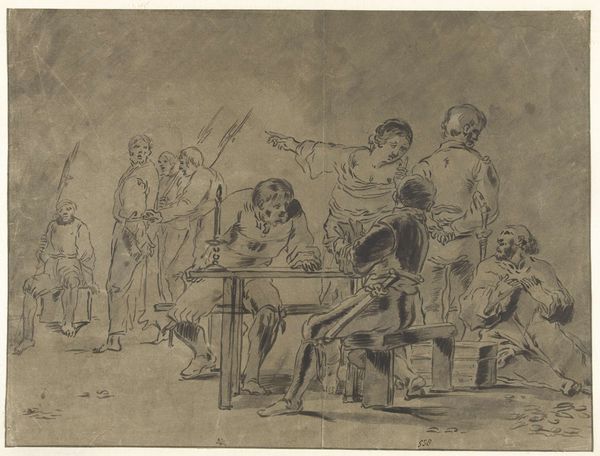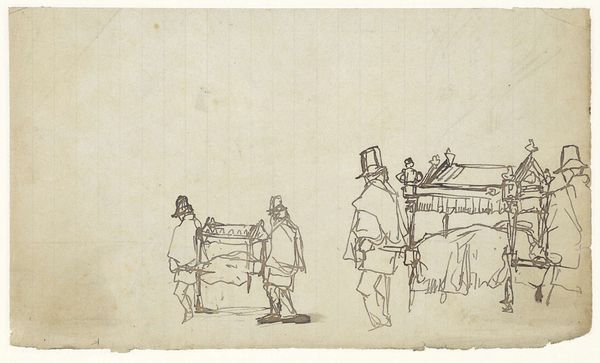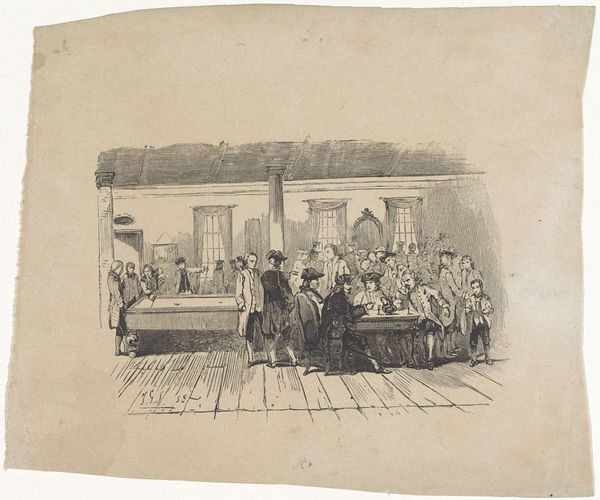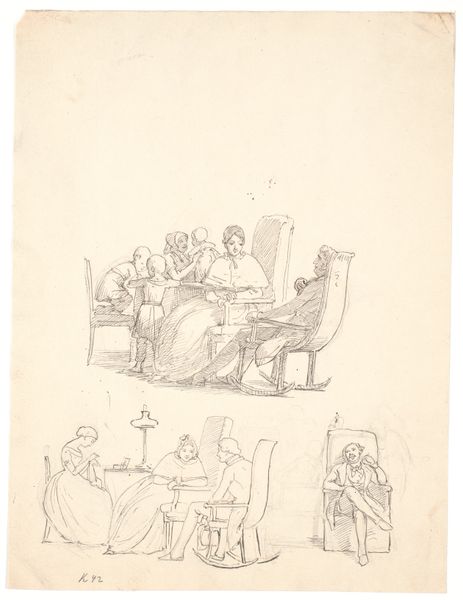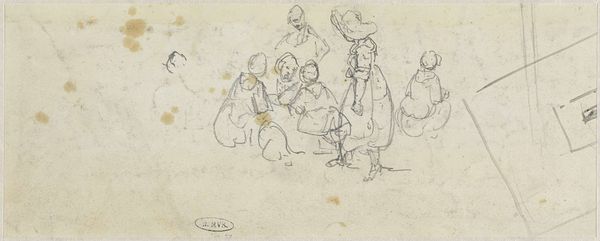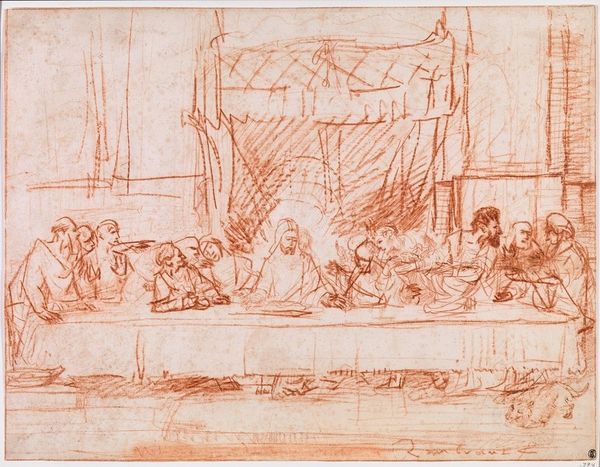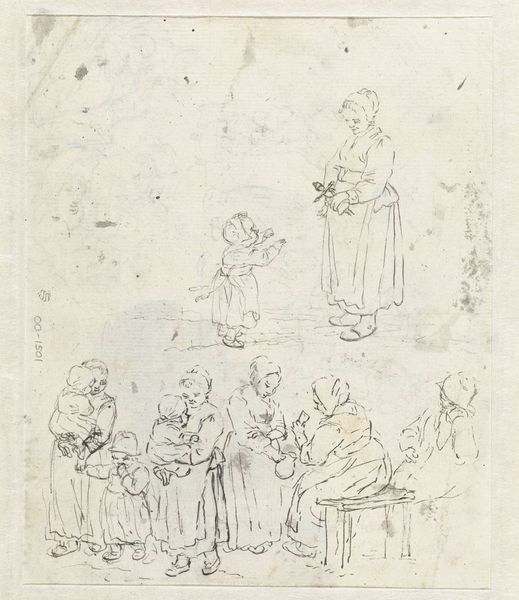
Copyright: Public Domain: Artvee
Curator: James Ensor created this etching titled "De Gendarmes" in 1888. Editor: My first impression is that it’s…uneasy. The style is so scratchy and frantic, it conveys this sense of underlying tension despite depicting seemingly mundane figures. Curator: Precisely. Ensor uses figuration and caricature to imbue these figures, presumably police, with a grotesqueness that speaks volumes about societal power structures and perhaps his own unease with authority. Notice how their elaborate hats and uniforms become symbols of absurdity. Editor: And it's the process itself—etching—that amplifies this. The corrosive action of acid on the plate mirrors, perhaps intentionally, the corroding influence of power on individuals. Each line, each scratch is deliberate. The scale, judging by other examples of his prints, is likely quite intimate. Curator: Consider the cultural context. Late 19th-century Belgium was grappling with rapid industrialization, social unrest, and burgeoning artistic movements. Ensor, like many artists of his time, was using imagery to question established norms and values. The print could allude to the complicated dynamic between public appearance and societal stability, as seen in many historical etchings. Editor: And there is a raw, almost frantic, quality to the work, likely from direct handling. Etching allows for very fine detail but the overall affect here is almost violently rendered. Also consider how accessible printmaking would have been compared to painting – the choice of media might be a comment in itself. Curator: I agree. There’s a universality to the discomfort presented that extends beyond the political commentary and relates to broader concerns about human nature and the role of social control, continuing to resonate. Editor: Ultimately, I’m left thinking about the physical act of creation, the time, the labor, and how Ensor transformed base materials into such a compelling expression of, shall we say, political unease. The materiality itself communicates, just as much as the symbolism you’ve elucidated.
Comments
No comments
Be the first to comment and join the conversation on the ultimate creative platform.
